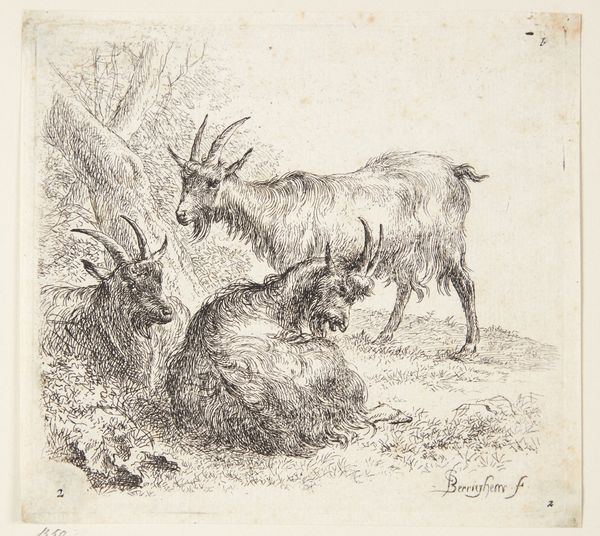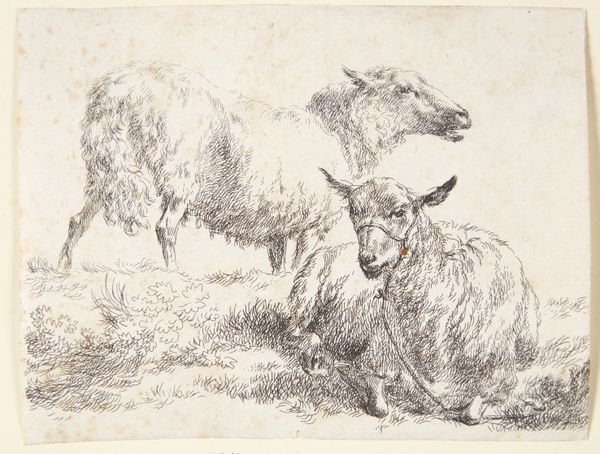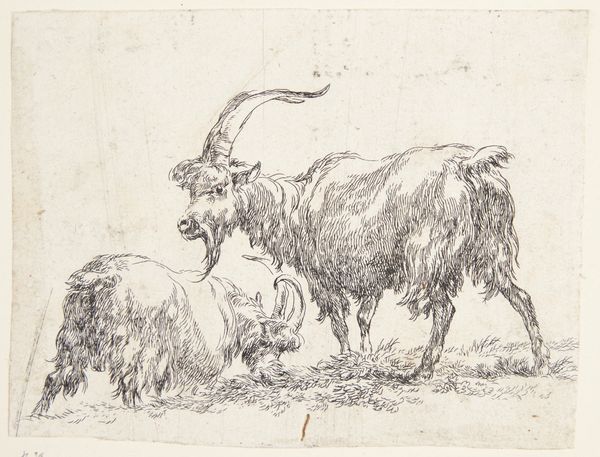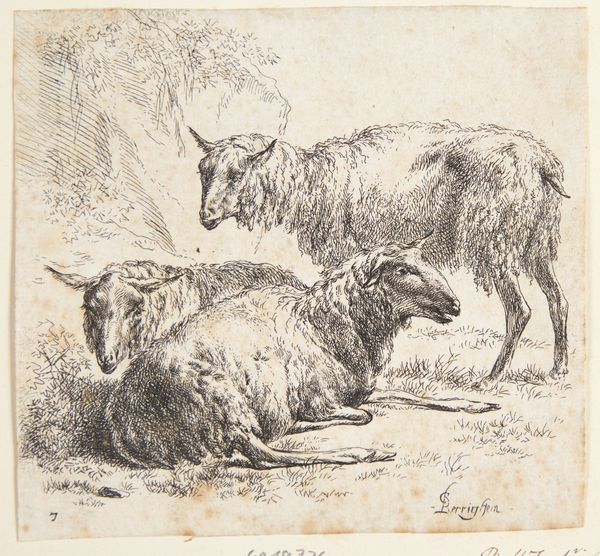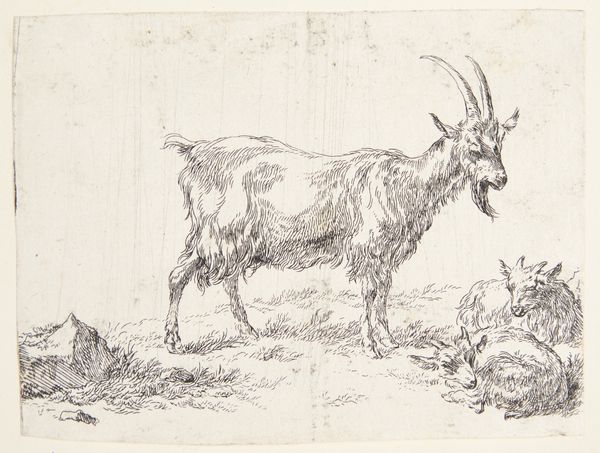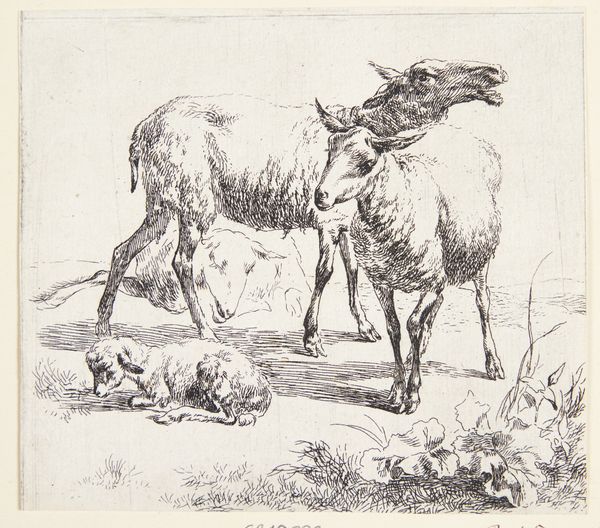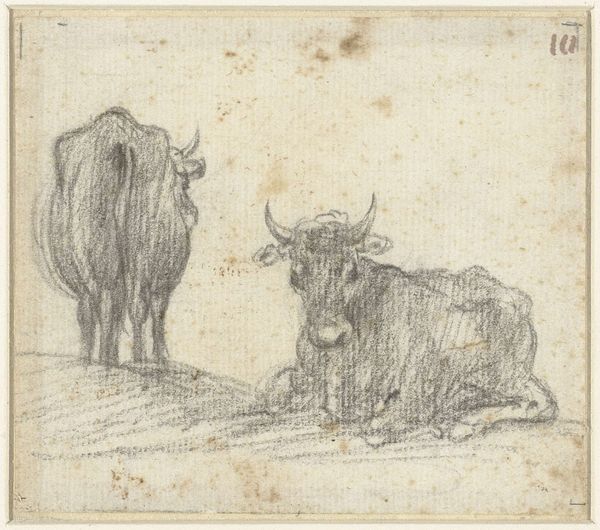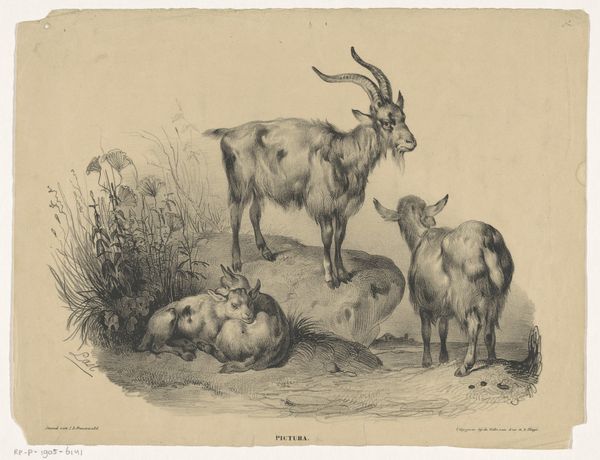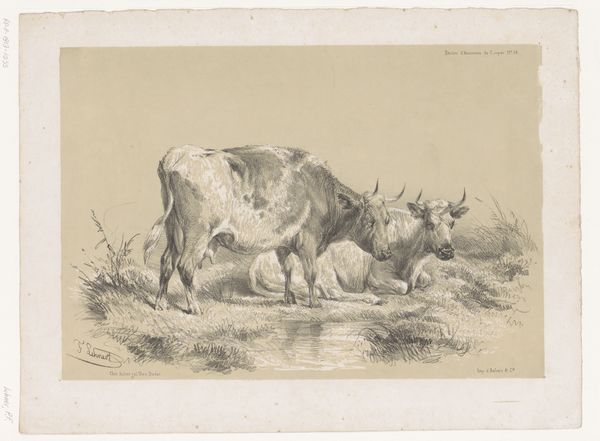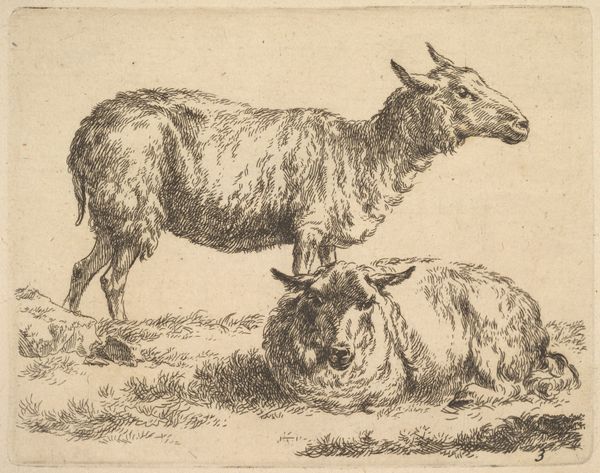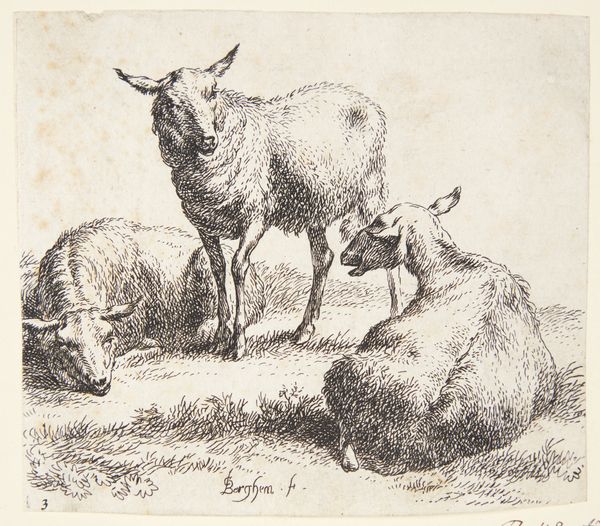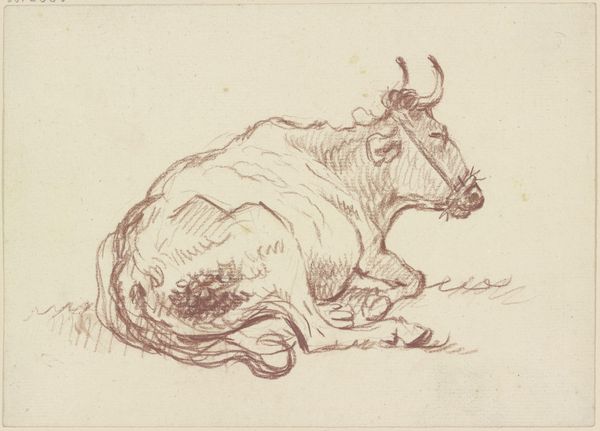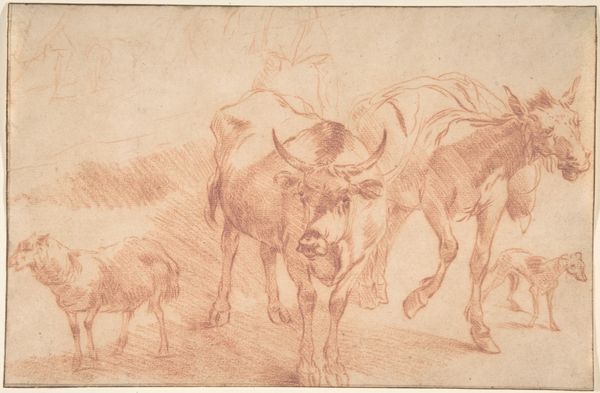
print, etching
#
baroque
#
animal
# print
#
etching
#
landscape
#
genre-painting
Dimensions: 102 mm (height) x 112 mm (width) (bladmaal)
Editor: Here we have "Tre geder," or "Three Goats," an etching by Nicolaes Berchem, likely created sometime between 1620 and 1683. It's interesting how the artist has rendered such varied textures with simple etching techniques. What catches your eye in terms of the materials and process of this print? Curator: Well, look at the labor involved in creating this etching. Each line, each shade, results from Berchem’s deliberate physical engagement with the plate. This isn't some fleeting sketch; it represents skilled artisanship transforming raw material into a commodity—art. Notice, too, the potential for reproducibility inherent in printmaking. It makes art accessible to a wider, possibly emerging, consumer base. Editor: That's fascinating! I hadn't considered how printmaking democratized art access in a way. Do you think the subject matter connects with broader socio-economic factors? Curator: Absolutely. Think about 17th-century Dutch society – burgeoning trade, increasing urbanization. Rural themes, like these goats, tap into a nostalgia for a simpler, perhaps idealized, existence. And beyond simple depictions of animals, there may be symbolic interpretations of this. We also can think about the use of the animal for textiles; Berchem skillfully transforms common materials into economic gain through artistic creation. Editor: So, even a seemingly straightforward image of goats tells a more intricate story about the intersection of art, labor, and economics? Curator: Precisely. Berchem's piece prompts us to analyze not just *what* is depicted, but *how* it was made, *why* it was made that way, and its impact on the emerging art market. Editor: This has changed my perspective completely. I initially saw just goats, but now I appreciate the layers of material production and cultural context embedded within. Curator: And that’s the beauty of examining art through a materialist lens—we reveal how deeply intertwined art is with the realities of labor and economy.
Comments
No comments
Be the first to comment and join the conversation on the ultimate creative platform.
